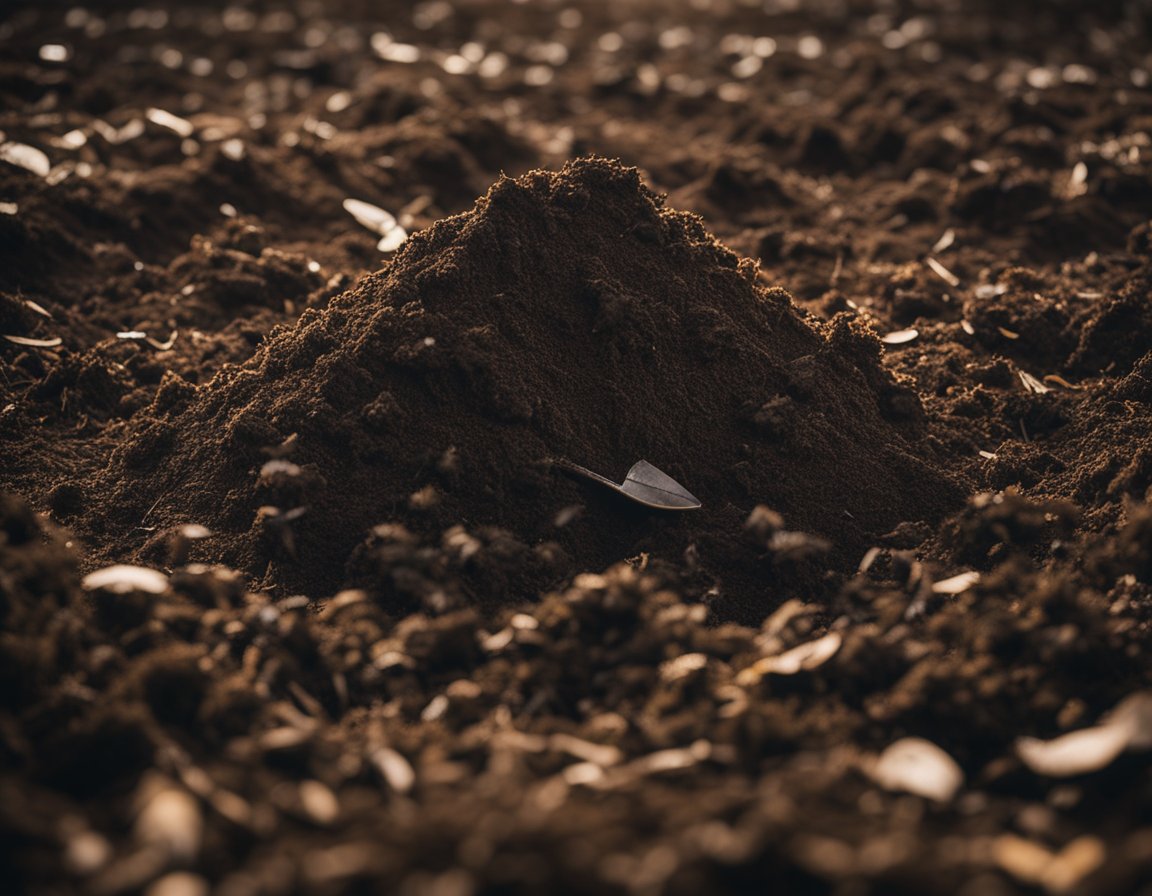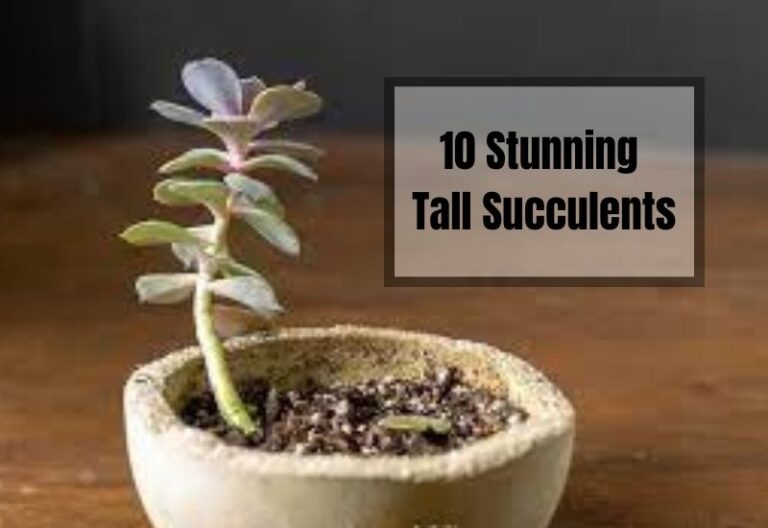How to Prepare Garden Soil for Next Year: Professional Tips and Techniques
If you’re a gardener, you know how important it is to prepare your garden soil for the next growing season. Whether you’re looking to grow vegetables, fruits, or flowers, the quality of your soil plays a vital role in the success of your garden.
By taking the time to prepare your soil properly, you can ensure that your plants receive the nutrients they need to thrive.

To begin the process of preparing your garden soil for next year, start by understanding the importance of soil preparation. Healthy soil is essential for growing healthy plants, as it provides the necessary nutrients and support for strong root growth. By taking the time to prepare your soil now, you can ensure that your plants have the best possible start next year.
Once you understand the importance of soil preparation, you can begin the process of preparing your garden soil for next year. This involves recognizing the right time for soil preparation, choosing the right tools for the job, and maintaining soil health throughout the year. With the right approach, you can create a healthy and productive garden that will thrive for years to come.
Key Takeaways
- Proper soil preparation is essential for growing healthy plants.
- The right tools and timing are critical for successful soil preparation.
- Maintaining soil health throughout the year is key to long-term garden success.
Understanding the Importance of Soil Preparation

Preparing your garden soil for next year’s growing season is an essential step towards a successful harvest. Soil preparation involves a series of steps that aim to improve the texture, fertility, and overall health of your soil. By taking the time to prepare your soil properly, you can ensure that your plants have access to the nutrients, water, and air they need to thrive.
One of the main reasons why soil preparation is so important is that it helps to improve soil structure. Soil structure refers to the way in which soil particles are arranged. When soil is compacted or has poor structure, it can make it difficult for plant roots to penetrate the soil and access the nutrients they need.
By improving soil structure through soil preparation techniques such as tilling, composting, and mulching, you can create a more hospitable environment for your plants to grow.
Another reason why soil preparation is important is that it helps to improve soil fertility. Soil fertility refers to the ability of soil to support plant growth. When soil is lacking in essential nutrients such as nitrogen, phosphorus, and potassium, it can lead to stunted growth, poor yields, and even plant death.
By adding organic matter such as compost or aged manure to your soil, you can improve soil fertility and provide your plants with the nutrients they need to grow strong and healthy.
How to Prepare Garden Soil for Next Year

Preparing your garden soil for next year is essential to ensure that your plants grow healthy and strong. Here are some steps you can follow to prepare your garden soil for next year:
- Clear the Garden Area: The first step in preparing your garden soil is to clear the area of any existing plants, weeds, and debris. Remove any dead plants, weeds, and rocks from the soil surface. This will help to prevent the spread of diseases and pests that can harm your plants.
- Test Your Soil: Testing your soil is important to determine the pH level and the nutrient content of your soil. You can use a soil test kit or send a sample of your soil to a lab for analysis. Once you know the pH level and nutrient content of your soil, you can make the necessary adjustments.
- Add Organic Matter: Adding organic matter to your soil is essential to improve its structure and fertility. Organic matter includes compost, manure, and leaf mold. You can add organic matter by spreading a layer of compost or manure on top of your soil and then tilling it in.
- Mulch Your Soil: Mulching your soil is important to retain moisture and prevent weeds from growing. You can use a variety of materials for mulching, including straw, leaves, and grass clippings. Spread a layer of mulch on top of your soil to a depth of 2-3 inches.
- Cover Your Soil: Covering your soil during the winter months is important to protect it from erosion and nutrient loss. You can use a cover crop, such as clover or rye, or a layer of straw or leaves to cover your soil.
By following these steps, you can prepare your garden soil for next year and ensure that your plants grow healthy and strong.
Recognizing the Right Time for Soil Preparation
Preparing your garden soil for next year requires careful planning and timing. The best time to start soil preparation is in the fall, after the growing season has ended. This allows enough time for the soil to rest and rejuvenate before the next planting season.
Before starting soil preparation, you should consider the type of soil in your garden. Sandy soils require more organic matter to improve water retention, while clay soils require more sand to improve drainage. You can test your soil using a soil test kit to determine its pH level and nutrient content.
Once you have determined the type of soil in your garden, you can start preparing it for the next planting season. The first step is to remove any weeds, old plants, and debris from the garden bed. You can use a garden fork or spade to loosen the soil and remove any weeds or roots.
Next, you should add organic matter to the soil. Organic matter, such as compost or aged manure, helps to improve soil structure, increase water retention, and provide essential nutrients to plants. You can also add other soil amendments, such as lime or sulfur, to adjust the soil pH level.
Choosing the Right Tools for Soil Preparation
Preparing your garden soil for next year’s planting season is a crucial step in ensuring a successful harvest. Choosing the right tools for soil preparation can make the process easier and more efficient.
When it comes to soil preparation, there are a variety of tools to choose from. Some of the most common tools include:
- Garden fork: A garden fork is a versatile tool that can be used for breaking up soil, mixing in compost, and removing weeds and rocks.
- Spade: A spade is a flat, rectangular tool with a sharp edge that is used for digging and cutting through soil.
- Tiller: A tiller is a motorized tool that is used to break up soil and prepare large areas of land for planting.
- Rake: A rake is a tool with a series of tines that is used for smoothing out soil and removing debris.
Before choosing a tool, consider the size of your garden and the condition of your soil. If you have a small garden, a garden fork or spade may be sufficient for soil preparation. If you have a larger garden or heavy soil, a tiller may be necessary to break up the soil and prepare it for planting.
Regardless of the tool you choose, make sure it is in good condition and appropriate for the task at hand. Using the right tool can save you time and effort, and help ensure a successful harvest next year.
Maintaining Soil Health Throughout the Year
To ensure that your garden soil is ready for the next planting season, it is essential to maintain its health throughout the year. Here are some tips to help you keep your soil healthy:
- Avoid Over-Tilling: Tilling the soil too much can disrupt its structure and damage its biodiversity. Instead, try to till only when necessary and limit it to a depth of 6-8 inches.
- Add Organic Matter: Incorporating organic matter such as compost, manure, or leaves into your soil can improve its structure, nutrient content, and water-holding capacity. Aim to add 2-3 inches of organic matter to your soil each year.
- Mulch: Mulching your garden beds can help conserve moisture, suppress weeds, and regulate soil temperature. Use organic mulches such as straw, leaves, or grass clippings and spread them 2-3 inches thick.
- Rotate Crops: Planting different crops in the same spot each year can deplete soil nutrients and increase the risk of pests and diseases. Try rotating your crops each year to help maintain soil health.
- Test Soil pH: Soil pH affects the availability of nutrients to plants. Test your soil pH regularly and adjust it as needed using lime or sulfur.
By following these tips and maintaining your soil health throughout the year, you can ensure that your garden soil is ready for the next planting season.
Frequently Asked Questions
What are the essential components of healthy garden soil?
Healthy garden soil should contain a balanced mixture of sand, silt, and clay, as well as organic matter such as compost, manure, or leaf mold. Additionally, garden soil should have a pH between 6.0 and 7.0, as this range is optimal for most plants to thrive.
How can I improve the quality of my garden soil for next year’s plants?
One of the best ways to improve garden soil quality is to add organic matter to it. This can be done by adding compost, aged manure, or leaf mold to the soil. Additionally, you can use cover crops such as clover or rye to add nutrients and improve soil structure.
What are the best soil additives to use for a vegetable garden?
For a vegetable garden, the best soil additives are compost, aged manure, and organic fertilizers. These additives provide essential nutrients for healthy plant growth and improve soil structure, water retention, and drainage.
What steps should I take to prepare my garden bed for planting?
To prepare your garden bed for planting, start by removing any weeds, rocks, or debris from the soil. Then, loosen the soil to a depth of at least 8 inches using a garden fork or tiller.
Next, add organic matter such as compost or aged manure to the soil, and mix it in well. Finally, rake the soil smooth and level before planting.
How can I refresh old garden soil for next year’s crops?
To refresh old garden soil, start by removing any weeds or dead plants from the soil. Then, loosen the soil to a depth of at least 8 inches using a garden fork or tiller. Next, add fresh compost or aged manure to the soil and mix it in well.
Finally, cover the soil with a layer of mulch to help retain moisture and suppress weed growth.
What are some effective methods for soil preparation in the winter?
In the winter, you can prepare your garden soil by adding organic matter such as compost or aged manure to the soil and covering it with a layer of mulch.
This will help protect the soil from erosion and leaching, and also provide nutrients for next year’s plants. Additionally, you can plant cover crops such as winter rye or clover to improve soil structure and add nutrients to the soil.





